Where to use?
Doorways
In some cases, the slopes at the corners of the walls are not covered with door frames, but are shaped like the rest of the surface. Because opening - whether standard rectangle or rounded arch, must have increased wear resistance, its outer corners need protection.
In the photo, the framing of a wide opening with platbands under a tree
Outside corners
The ends are more in need of framing: due to frequent rubbing and touching with your hands, because wallpaper or paint on them quickly deteriorates. Outside corners can be protected directly during wall decoration, for this use decorative rock, plastic corners, wood, metal.
It is possible to decorate the outer joints covered with wallpaper even later, when the appearance is ruined. Possible options: decorative tape, wooden corners, plastic.
Most of all, the corners of the walls in hallways, in kitchens, in children's rooms need protection. Also in places near switches or outlets.
Internal corners
The decor of the corner inside the walls is more likely not so much a necessary as an additional use. For example, in order not to display a beautiful joint of wallpaper, it is enough to bring 2 stripes to the edge and close it with a corner on top for wallpaper in the corners.
Partitions
Zoning the space with drywall constructions, think in advance about the design of the corners, combined with the overall design. The task is the same - to protect the corners from damage.
Slopes
The decoration of windows and doors does not always imply beautiful adjoining to the walls. To close the uneven edge of the wallpaper and to refine the window, door or window slope, decorative corners are used.
Why do you need to trim?
There are 3 main reasons to install decorative corners on wall corners:
1. Protection... As already mentioned, the outer corners need additional protection as they are the material on them wears out very quickly from friction, accidental shock, and other mechanical damage. The exception is wall decoration with washable paint, tiles or porcelain stoneware, wood.
The photo shows an example of a damaged corner in the hallway
2. Alignment... It is quite difficult to remove the connection of 2 sides at 90 degrees with plaster - without experience it is almost impossible to do it with your own hands, and the work of a specialist will cost a lot of money.
To simplify the task, use special leveling corners for putty or external decorative elements after finishing.
3. Decorating... Of course, modern building standards for high-quality repairs suggest that the tiles are washed down at 45 degrees, ideally puttied corners for painting.
But doing finishing in the bathroom with your own hands without special equipment, it is impossible to make ceramic tiles washed down. Then metal corners and joints come to the rescue, allowing both to connect 2 walls from a tile to each other, and to close its edge.
The decorative function is also necessary at the junction of different materials - colored wallpaper with plain colors, wallpaper with paint, paint with tiles, and so on.
What can be used to trim the corners?
In the decor of the corners, the main thing is to choose the right materials.
Plastic corners
To protect corners used most often. Benefits: cheap, easy to work with (cut with a knife or scissors), large selection of colors (from solid white to wood imitation). Plastic is easy to install: liquid nails and masking tape are enough. Another plus - soft corners are suitable even for uneven joints - bend in the range from 80 to 100 degrees.
Corner profiles come in various widths - from 1.5 to 5-6 cm. Narrow ones look minimalistic, do not attract attention, but they cope with the main task. The framing of wide 4-5 cm strips looks more solid.
Important! For arched openings, windows, there are special "arched" corners: they easily follow the contours of the corners. They are made of soft plastic or other polymer that does not break, easily bending around any curves.
In the photo, the options for the colors of the PVC corners
Fake diamond
IN classic styles often found facing with a stone or its imitation. Moreover, the work uses both standard minerals and more technological ones - for example, flexible. The benefits are clear: The glued stone decor of the corners is not afraid of anything. Of cons - high cost of material, complexity of dismantling.
A more modern alternative is brick. You can buy decorative tiles or make imitation brickwork independently using a stencil and putty or plaster.
Wooden
Natural wood is a versatile material. It is used in wall decoration, decoration and protection. The benefits of working with wood are many... First of all, naturalness, environmental friendliness, along with this, decorativeness stands out: unlike PVC, wood can be not only flat, but also carved. In addition, there are great possibilities for changing color: from any shade of wood with preservation of the texture, to color with its painting.
Of the cons of wood - the relative complexity of processing. Trimming is more difficult than plastic. In addition, before use, you will have to sand (although you can find polished products on sale), paint. The second drawback is an extremely even angle; it is impossible to expand or reduce it a little.
MDF
A great alternative to natural wood is fiberboard corners. They imitate any breed, bend absolutely to any degree, are completely ready for use, can be easily installed on the corners of walls in an apartment, have a large margin of safety. The manufacturing process does not involve the addition of resins, so MDF is the most environmentally friendly of all fibrous materials.
Only one minus - the size. Standard planks are produced in a length of 2600 mm, if the ceilings in the apartment are higher, they will not be enough for the entire height, or you will have to install them end-to-end between the ceiling and floor plinths.
Metallic
Metal in the decor of corners is usually used in conjunction with tiles. The profile does not wear out, is not afraid of moisture (if special processing is available), it looks expensive.
But strong iron does not change shape (only an even angle of 90), it is difficult to cut it to the desired length, attach it in place.
Mosaic
Flexible small tiles, especially self-adhesive tiles, are a great quick option for protection and eye-catching decor. More modern than stone, cheaper, easier to install and dismantle. It is relatively inexpensive, easy to cut, and holds tight.
Column
They are made of various materials - from lightweight polyurethane or duropolymer, to stone, concrete. Suitable exclusively for classical style, or stylization of palace interiors: baroque, art deco.
It is better to use it in a limited way - you should not arrange all the free spaces with columns.
Silicone
Usually used in the bathroom or kitchen to close the junction of the sink to the countertop, bathtubs against the wall, countertops against the wall. It is easily installed, but after a while it loses its aesthetic appearance and requires replacement. Not used for finishing works.
Features of installation by material
Fixing corners for internal or external corners of walls depends on 2 factors: the material of the corner itself and the wall covering.
- Wallpaper... Decor made of plastic, wood, MDF is glued to almost anything: from double-sided tape (not the most reliable option) to special assembly glue. The main thing is to choose the right composition: for non-absorbent surfaces (plastic) or porous (wood, MDF). Metal structures, due to their weight, require a particularly strong adhesive.
Advice! If you use glue, until it dries completely, the function of the fixer for the corner in the right place will be performed by ordinary masking tape. Just press the corner in strips against the adjacent walls.
- Tile... Tile joints or skirting boards usually have a special ledge that is installed under the tile, due to which the corner decor is held firmly in place. There are also metal external parts of different sizes for finishing corners, they are glued to epoxy, polyurethane glue.
- PVC panels... As a standard, plastic panels come with plastic corners installed during their installation - they are securely attached to the profiles by means of a simple stapler or self-tapping screws. If the task is to decorate the finished finish, use a corner without partitions and suitable glue.
- Plaster, concrete... Rough porous surfaces are not the best base for glue. However, if the task is to make the end face smoother with the help of the inner panel, you can attach it to a regular finishing putty.
Important! Be sure to read the recommendations of the manufacturers of adhesives: what layer are applied, how much they dry, for which materials, premises (dry, wet, unheated) they are suitable. Following the instructions guarantees a long service life of the finished structure.
- Wood... In private wooden houses, it is most logical to choose the same corner decor for framing. First, they match the pattern. Secondly, they have the same properties, which means they will shrink and expand in the same way. As a rule, nails without heads are used in the interior, but ordinary carpentry or PVA glue will also hold small light elements. This method is also suitable for premises in apartments that have been decided sheathe clapboard - corridors, balconies, bathrooms.
In the photo, fastening the inner corner to wooden walls
Decorative examples in the interior
If ordinary corners seem boring or do not fit into the style, but mask an ugly joint, or a defect is necessary, there are other ways to arrange the corners.
- Furniture... In the literal sense, you can close the inner corner using a cabinet, shelving... The method is best suited for bedrooms, living rooms. Make permutationby moving the high pencil case to the damaged area.
- Decor... Decorations like paintings, photographs in baguettes solve the problem of empty ugly corners. Diagrams of how to properly hang a photo can be found on the Internet. The method is not ideal - for example, children may hurt, drop frames while playing, but the corner will look complete.
In the photo, the finish of the ends with ropes
Decorative corners greatly simplify the finishing process: do not be afraid to use them in repairs if you are not confident in your abilities or just want to extend the life of coatings in so-called "stressful" areas.


 10 practical tips for arranging a small kitchen in the country
10 practical tips for arranging a small kitchen in the country
 12 simple ideas for a small garden that will make it visually spacious
12 simple ideas for a small garden that will make it visually spacious
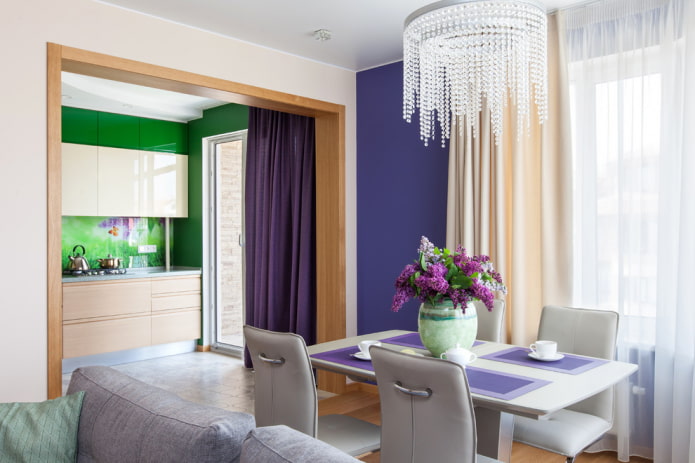
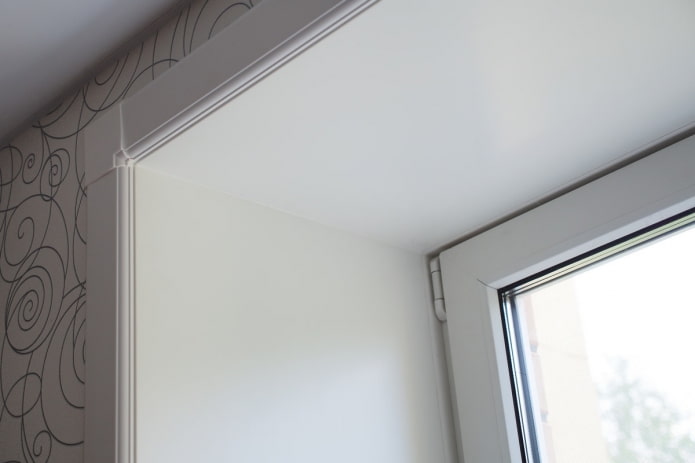
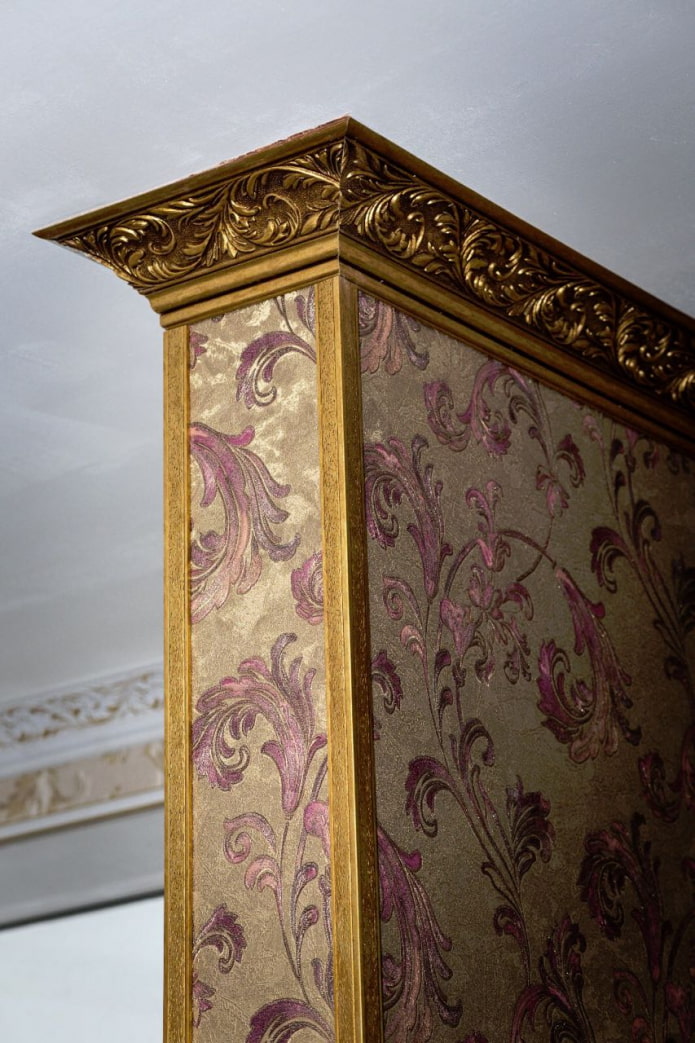
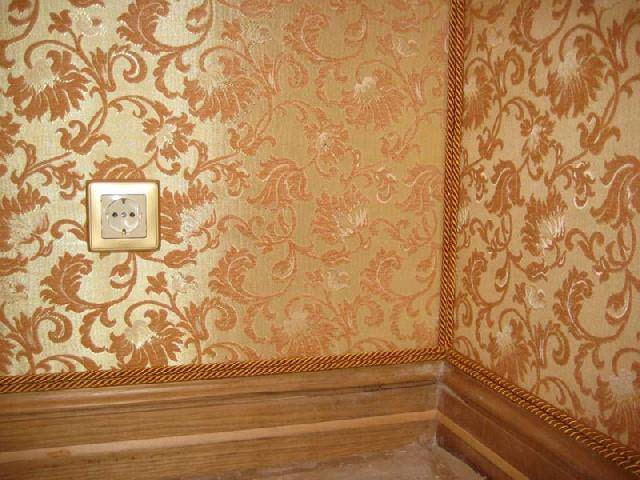
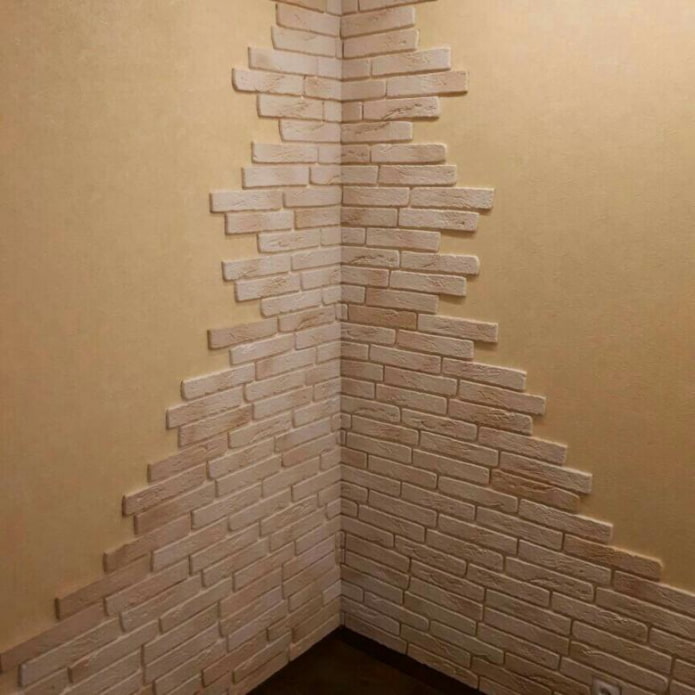

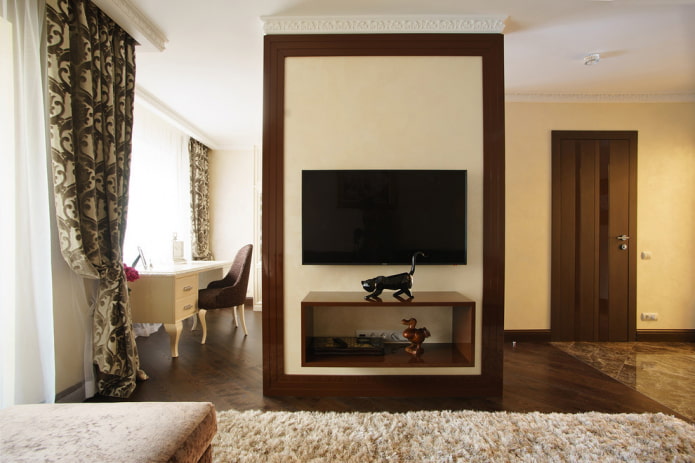
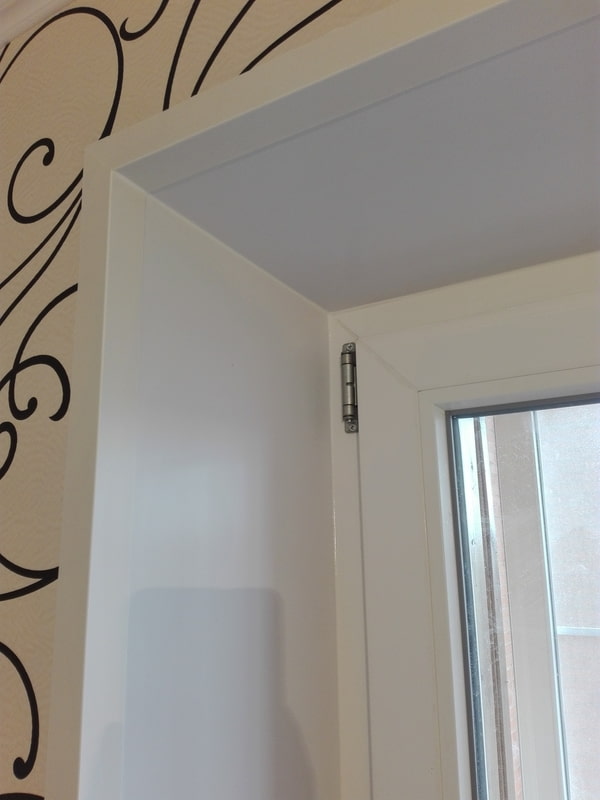
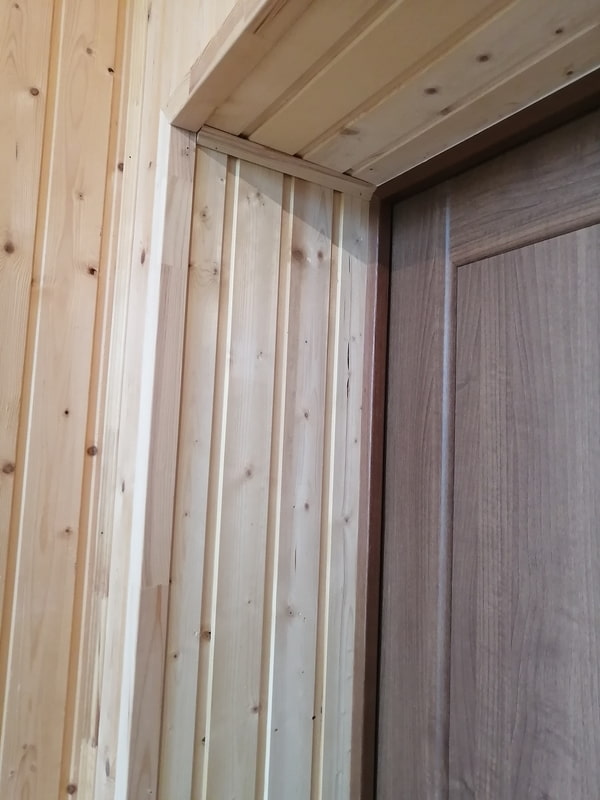
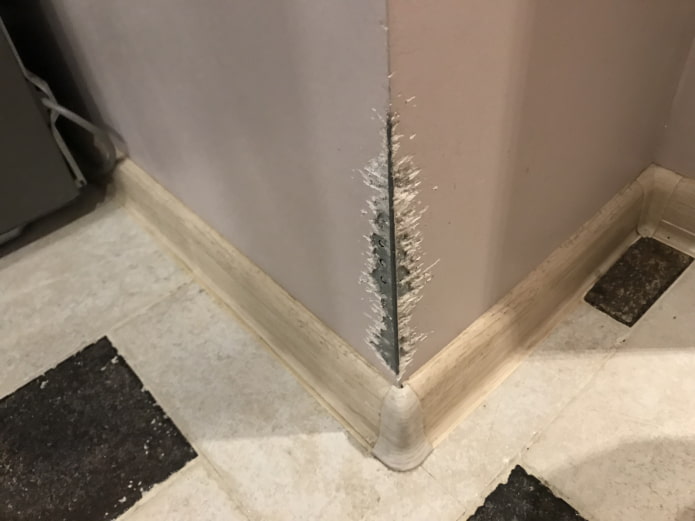
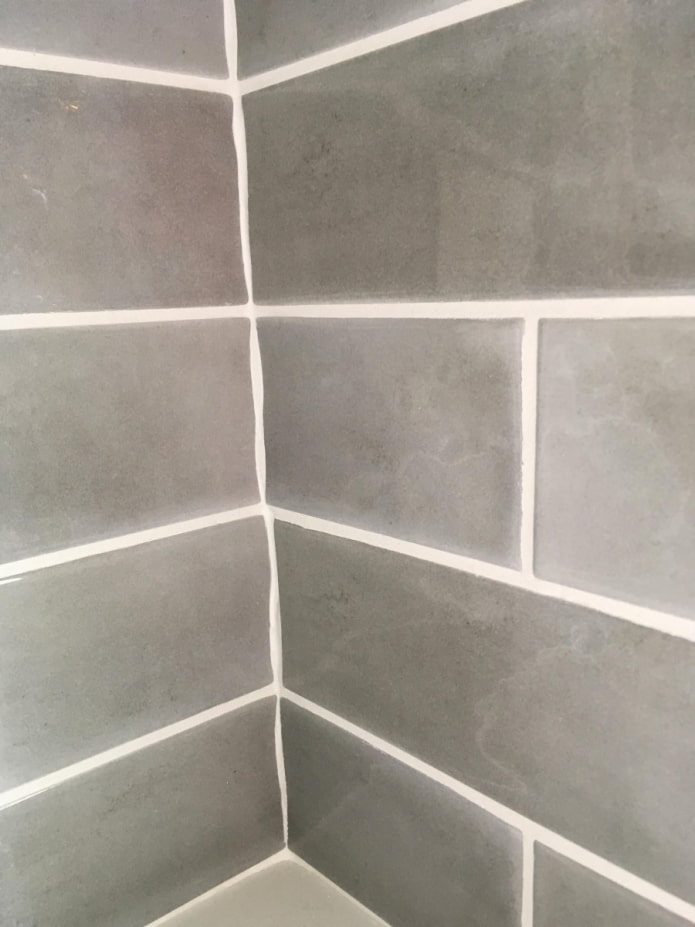
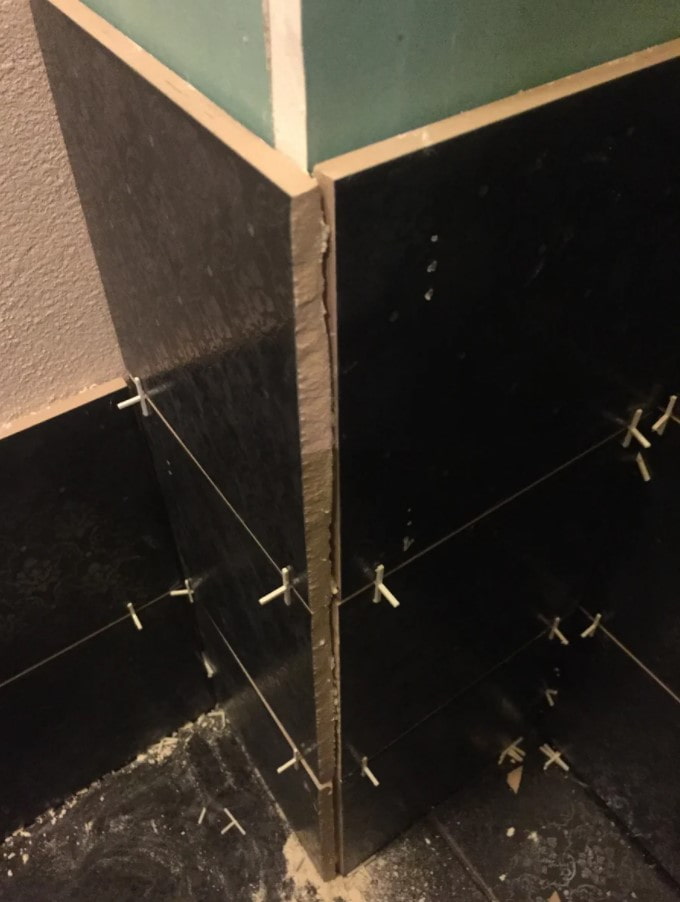
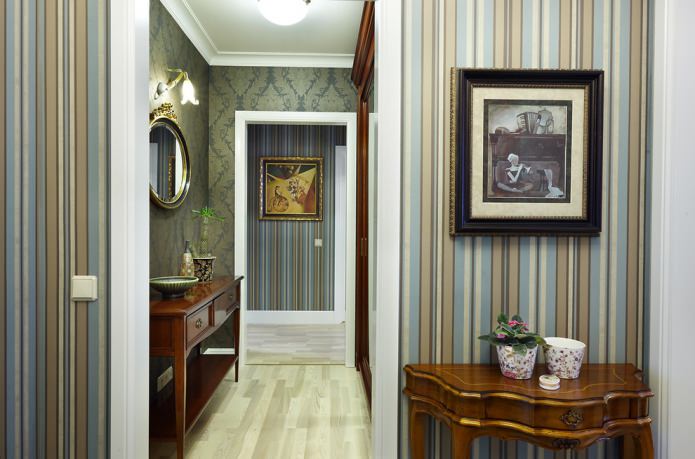
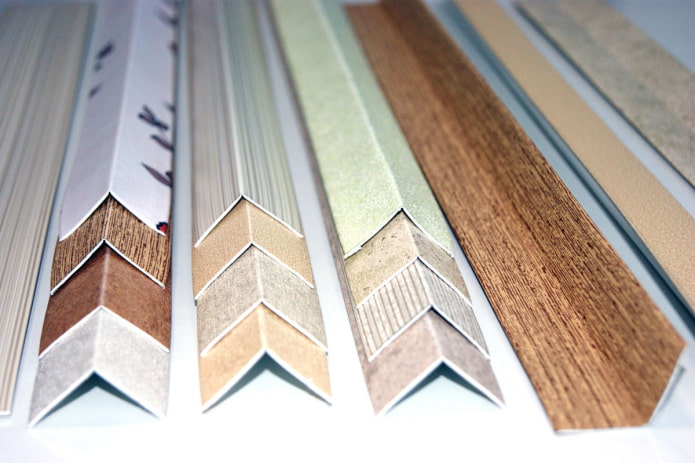
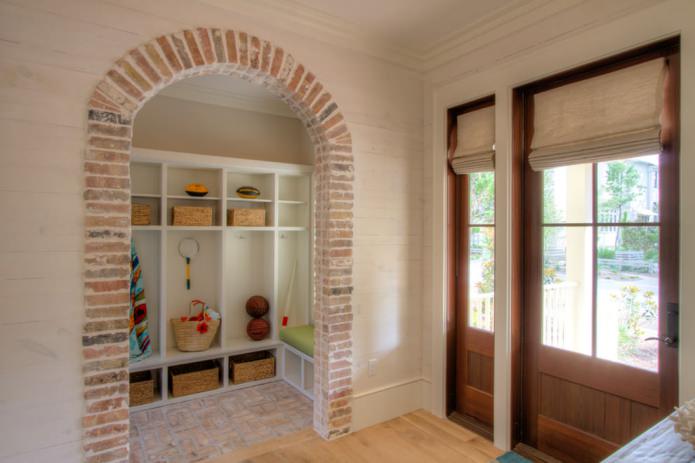

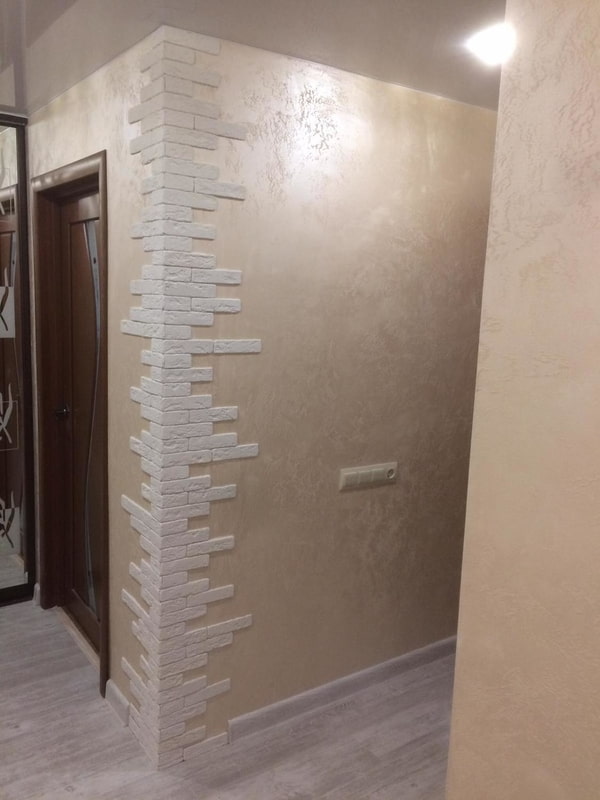

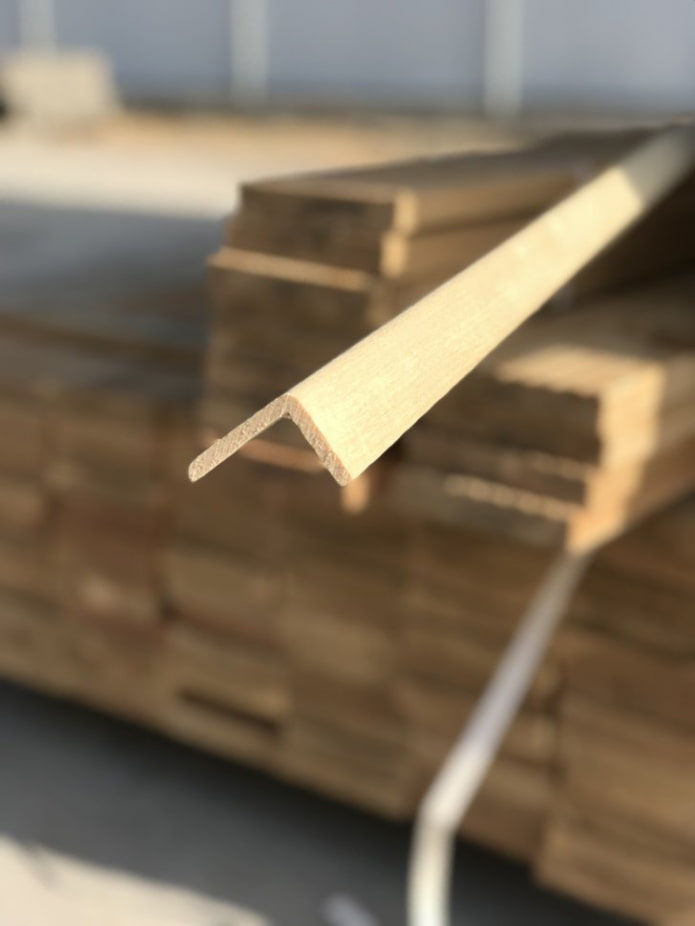
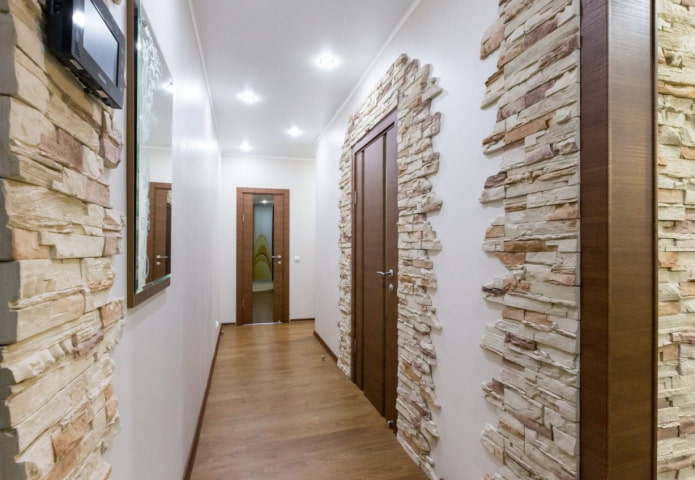
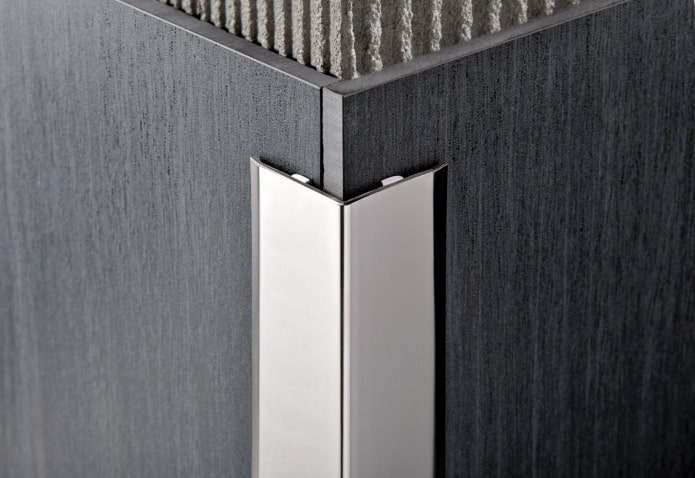
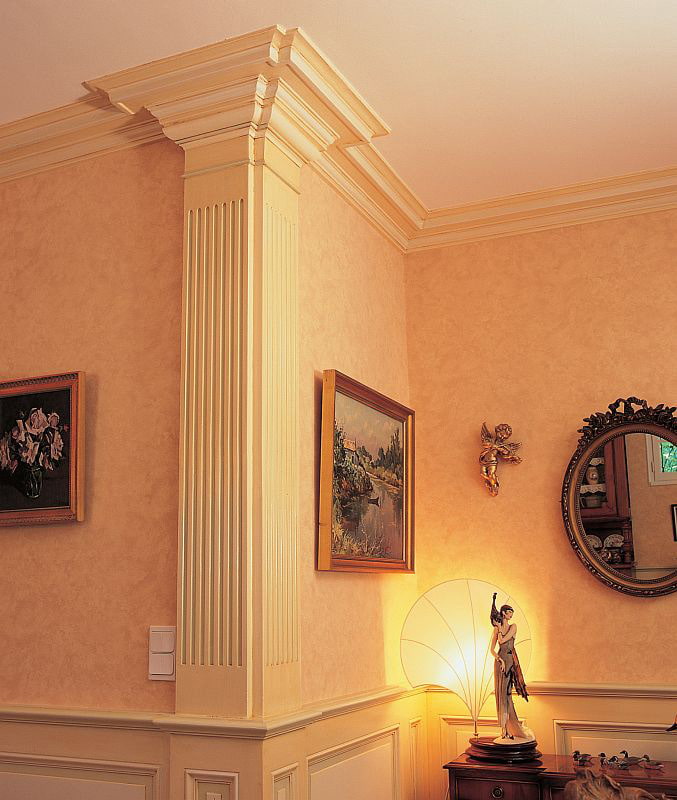
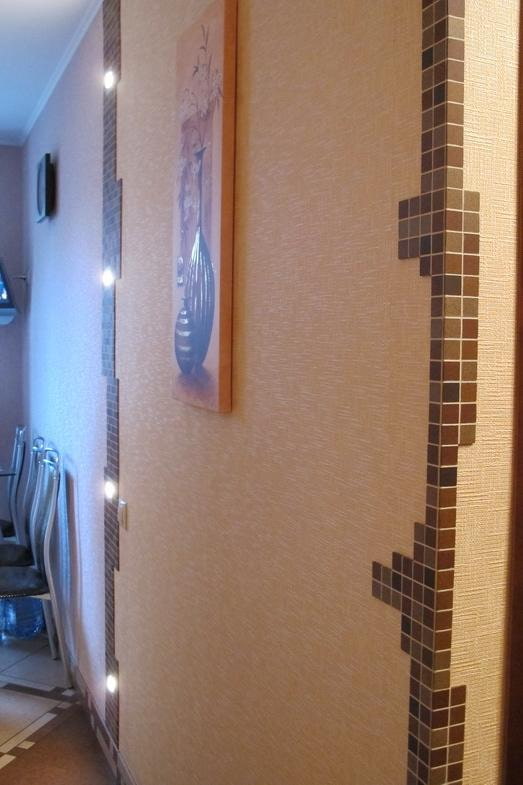
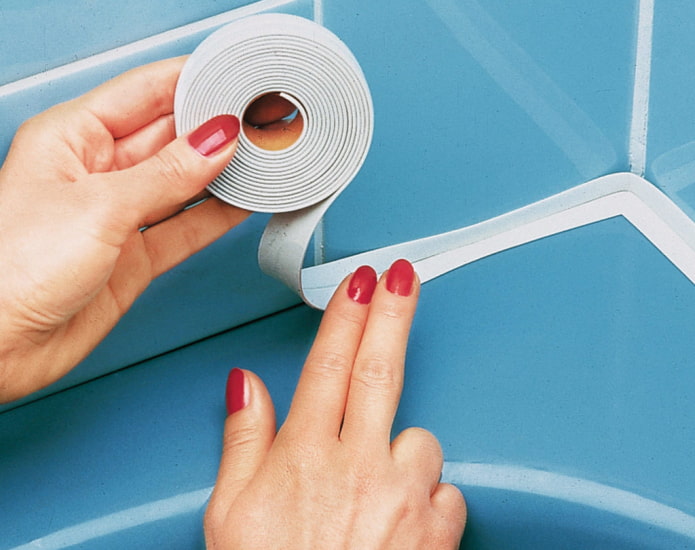
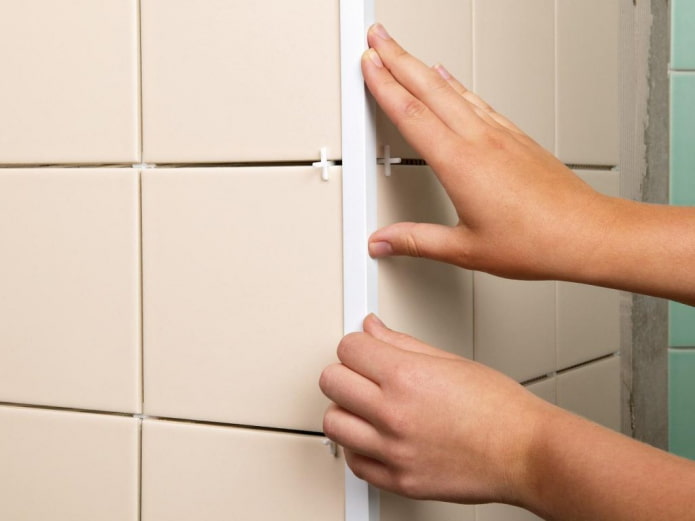

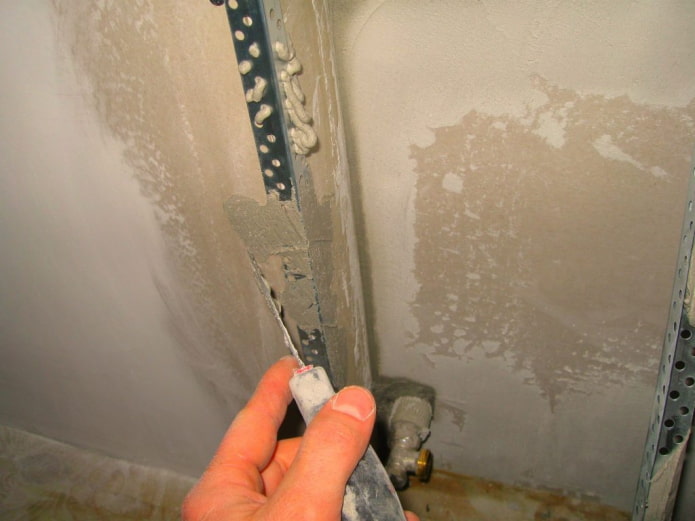
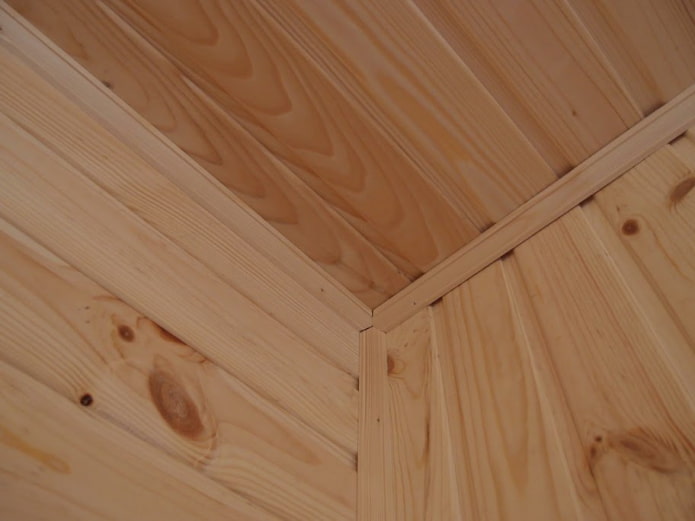
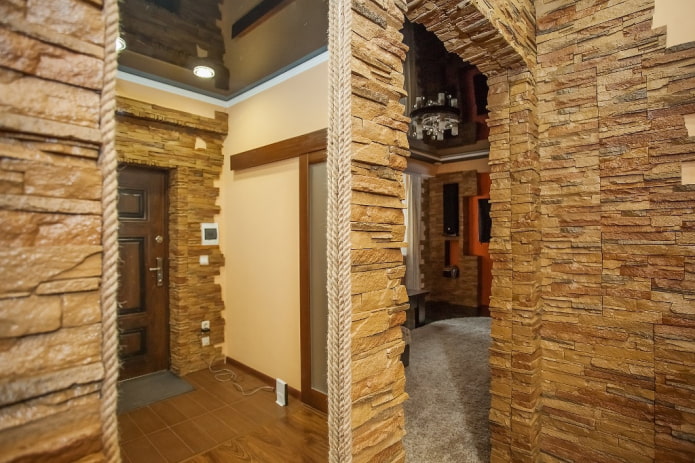
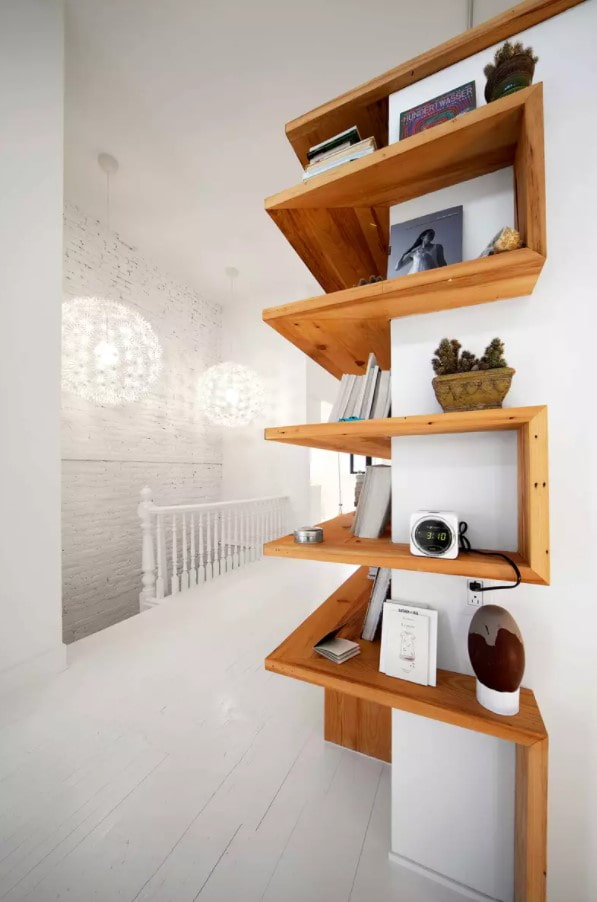
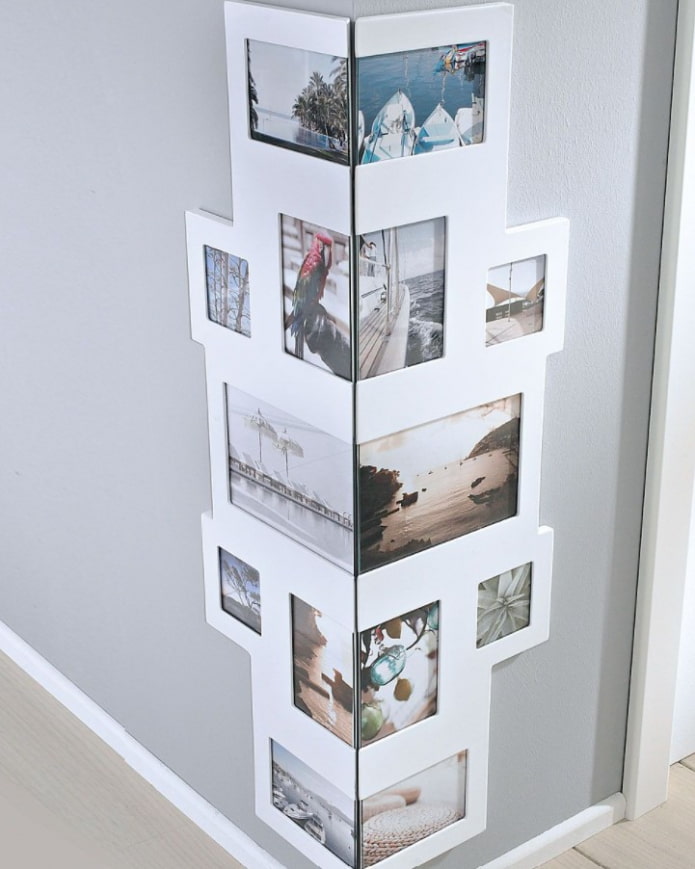


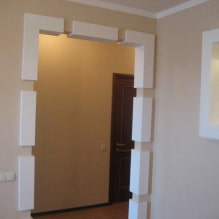
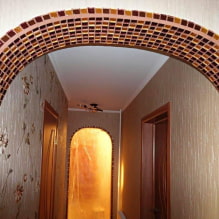
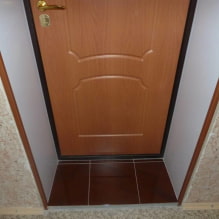

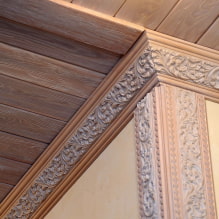
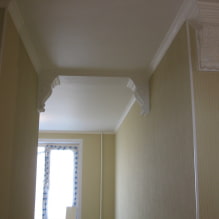

 What is better not to do it yourself during the repair?
What is better not to do it yourself during the repair? Bloated linoleum: how to fix it without disassembly
Bloated linoleum: how to fix it without disassembly The worst decisions in apartment renovation
The worst decisions in apartment renovation  Installation of ceiling tiles: choice of materials, preparation, order of work
Installation of ceiling tiles: choice of materials, preparation, order of work How to glue a ceiling plinth to a stretch ceiling?
How to glue a ceiling plinth to a stretch ceiling? Ceiling plinth for stretch ceiling: types, recommendations for selection
Ceiling plinth for stretch ceiling: types, recommendations for selection